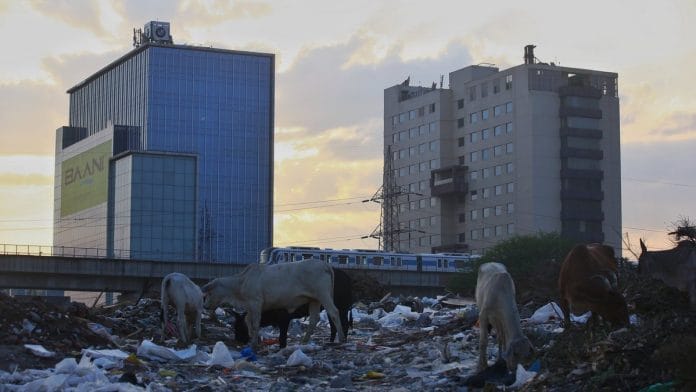Gurugram: When Sweta Arora and her husband bought their spacious apartment in Gurugram’s Golf Green Extension two years ago, they were convinced they had lucked out. It wasn’t too built up, and there were sunset views of the Aravallis and city skyline. But over the past year, the view has changed. Now, trucks offload concrete rubble outside and cows pull at plastic bags.
“The world knows the city as Gurugram, but it is actually Kudagram,” said Arora. She lives in Pragati Apartments, Sector 55, where flats sell for around Rs 2 crore. But even a few metres outside high-end DLF complexes like the Camellias, where condos go for up to Rs 100 crore, the picture isn’t much better. And now the garbage is going viral.
Last Friday, a French expat named Mathilde R posted on X that she had “never seen so much filth” anywhere else. “Africa, Asia, South-America are 100 times cleaner. It is sad for Indians. And for India,” she wrote. The post attracted a flurry of replies. Some offered whataboutery about Paris, but the overriding sentiment was anger. Then came another scathing post, this time from Sanjiv Kapoor, former Jet Airways CEO.
“Months later, worse than ever before. Shame on you, @MunCorpGurugram @DC_Gurugram @cmohry—no respect for the land, for tax-paying citizens, and not even for the cows! And you want to build a Disneyland in Haryana? Ludicrous!” he wrote, sharing pictures of a dumping ground with cows.
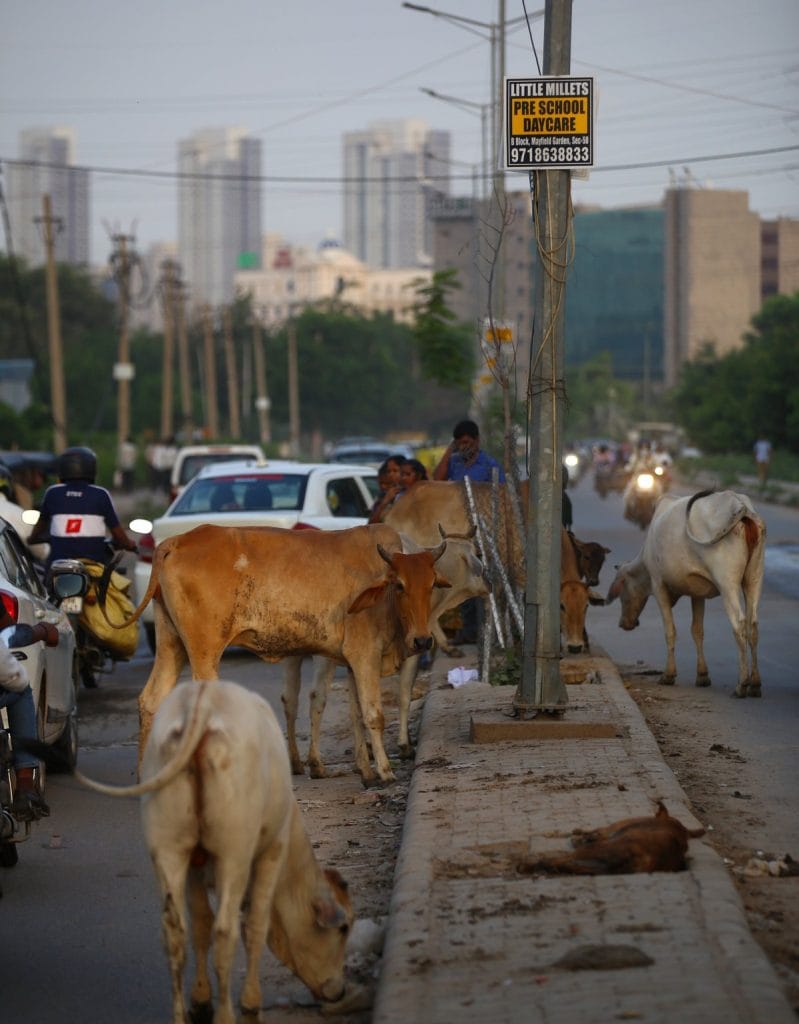
The posts struck a nerve. #Kudagram began trending. Frustrated residents shared their own photos, called out officials, and debated what it would take to get a working garbage, sewage, and industrial waste system. “Waste disposal is almost non-existent in the city,” one user said. Another called it an “international shame”. A third added: “There exist multi-crore so-called world-class condominiums, but outside, nobody cares.”
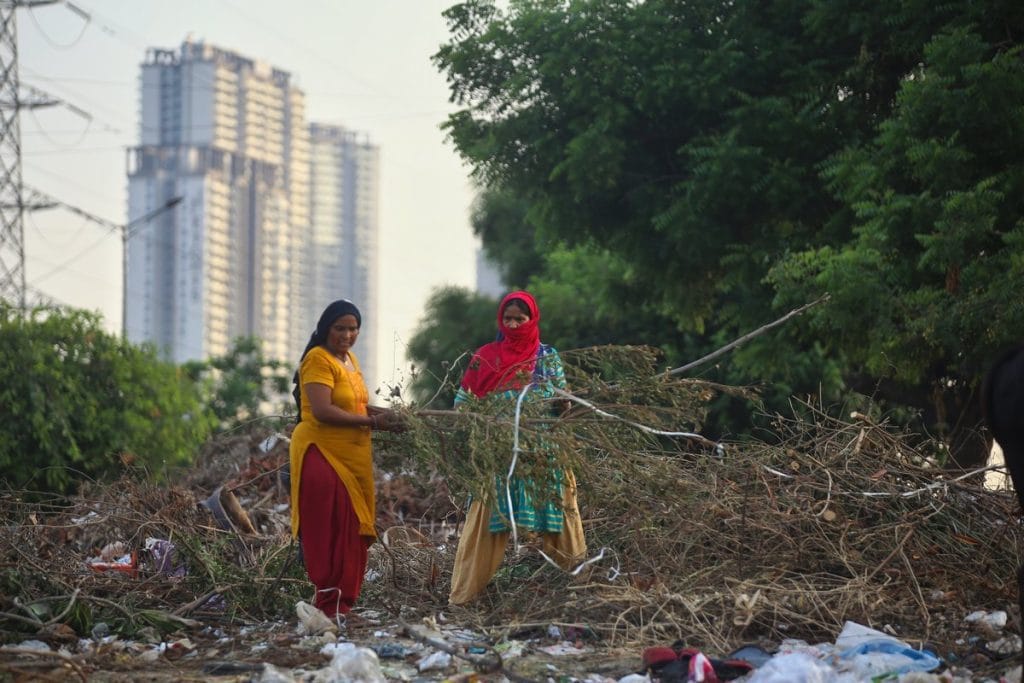
On Monday, the Municipal Corporation of Gurugram responded to Kapoor’s post with a photo of a cleaned-up dump, claiming that “prompt action was taken to resolve the issue”. But residents have been burned before.
Garbage is the great leveller in Gurugram. Once seen as a problem of the shanties, it is now at the doors of the moneyed elite. It took a tweet from a former CEO and a French expat to bring national focus back on the mess. Systemic failures, private contractors, and mafias have turned a city of corporate towers and some of India’s most expensive addresses into a sprawl of debris and dysfunction.
In June 2024, the Haryana government declared a solid waste exigency but nothing has changed. Gurugram has stayed in a state of garbage emergency for over a year—the first Indian city to earn that dubious distinction. Over the past four years, the Municipal Corporation of Gurugram (MCG) has allocated Rs 1,795 crore to sanitation. A clean-up blitz called SWEEP (Solid Waste Environment Exigency Programme) was launched. A December deadline was set to clear the Bandhwari landfill. But today, more than 8 lakh metric tonnes of legacy waste remain untreated, over 250 illegal dumping sites have become permanent fixtures, and over 60 per cent of neighbourhoods still don’t get reliable doorstep collection.

IAS officer Pradeep Dahiya, who joined as Gurugram’s civic commissioner in May, said the situation had worsened temporarily due to preparations for the first National Conference of Urban Local Bodies held this month in Manesar.
“One of the immediate reasons for this menace is that our resources were diverted towards the Manesar event, hence we could not monitor the situation here in the city,” he said. “For the next six months, we are getting 400 LCVs for collection of waste, and this will help us stabilise the situation. We will make everything go back to normal in four days.”
Meanwhile, in Sector 55 alone, more than four to five heaps of waste lie scattered beside the main road.
Also Read: Gurugram has a giant illegal guest-house problem. Over 4,000 notices, yet business as usual
Multinationals, malls, and muck
Gurugram has two faces. One is its status as a financial and tech powerhouse. It’s home to giant multinationals like Google, Microsoft, Wipro, Deloitte, TCS and HCL Tech. Business leaders like Deepinder Goyal of Zomato and Nirmal Kumar Minda of UNO Minda live in lavish gated towers. Gleaming malls and high-rises keep coming up. The other face is the stench and chaos just outside the gates.
In the 2000s, the “Millennium City” was sold as a utopia. Swanky roads, manicured parks, Aravalli views, clean air—everything that Delhi wasn’t. For those looking to escape the hullabaloo of the capital, it held out a real promise.
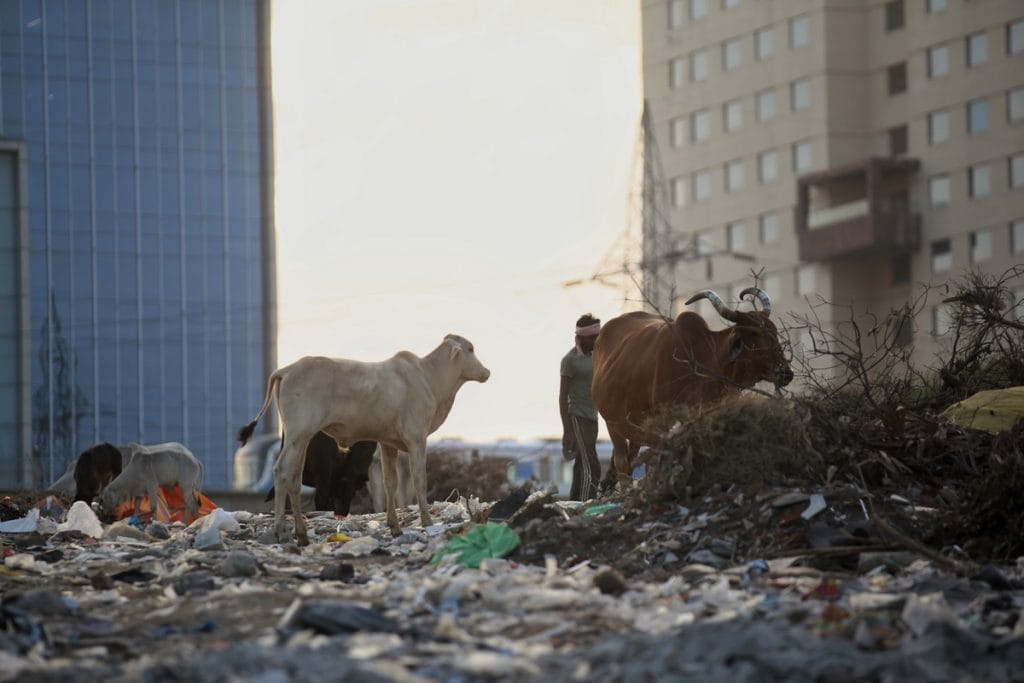
Twenty-two years ago, Anuradha P Dhawan moved from Malviya Nagar to Wellington Estate in Gurugram, filled with anticipation.
“We came running from South Delhi for a better life,” she said. “We used to keep our windows and doors open for fresh air. Now we have air purifiers in all rooms. The city has water, electricity, and basic infrastructure problems.”
Even in posh localities, the streets are scattered with wrappers and plastic latte cups. Cows wait at intersections beside SUVs. On rainy days, muck floats through waterlogged roads while traffic stalls. Residents say the garbage takeover has been getting worse, rather than better.

In Sector 55, there’s been a slow creep. Sweta Arora moved to Gurugram from Kolkata in 2018 and bought a flat in Pragati Apartments in 2023. At the time, the view included a patch of Aravalli forest and a line of trees. Now, four of the ten apartment complexes in the area overlook a growing dump.
“It’s been three years since the concrete landfill started building up. Today it has become a dumping yard,” said DP Makkar, a former DRDO officer who shifted to Sector 55’s Vastu Apartments in 2021. “One part of a wall around the green area was demolished, and some days, when the pile of waste is more, it starts spilling into the service road leading up to the apartment.”
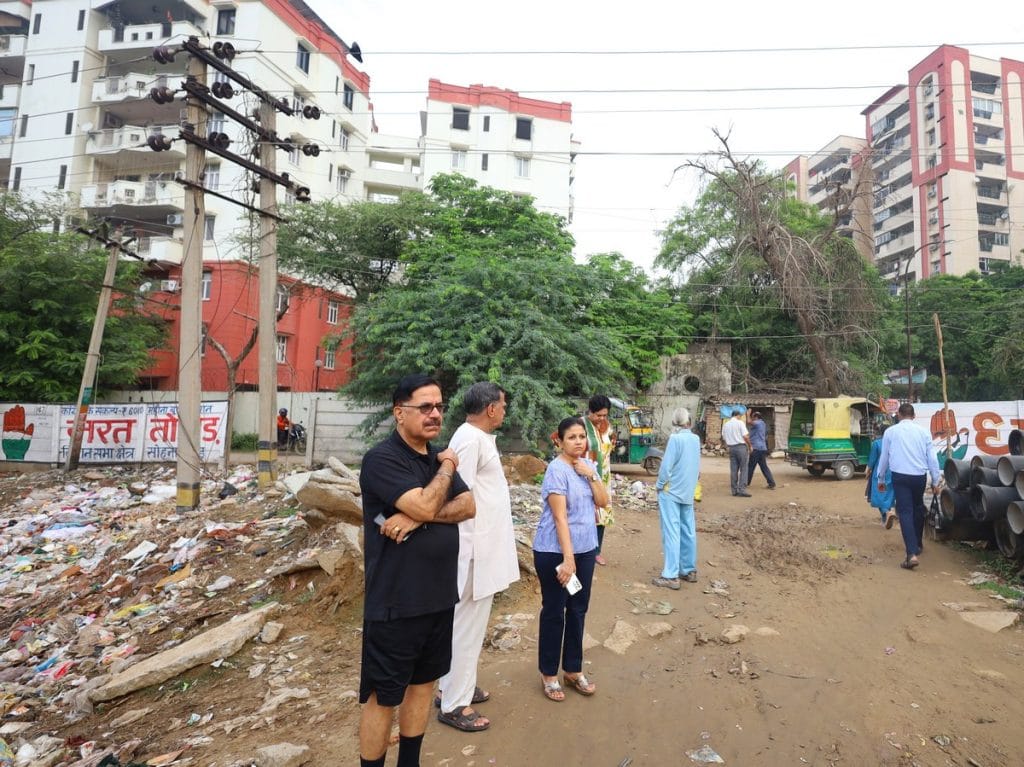
Ajay Sinha, who moved into the nearby City Apartments six months ago, said he sees “10-20 trucks” full of concrete waste getting dumped at the landfill everyday. His balcony, once left open to catch the southwest breeze, now stays shut to keep out the constant dust.
Across the city, however, hoardings advertise dream homes that cost crores. “Max Estates… LiveWell is now in Gurugram,” says one.
Dhawan, also a member of the Aravalli Bachao movement, is jarred by the contrast.
“Who is buying houses in Kudagram?” she asked, laughing.
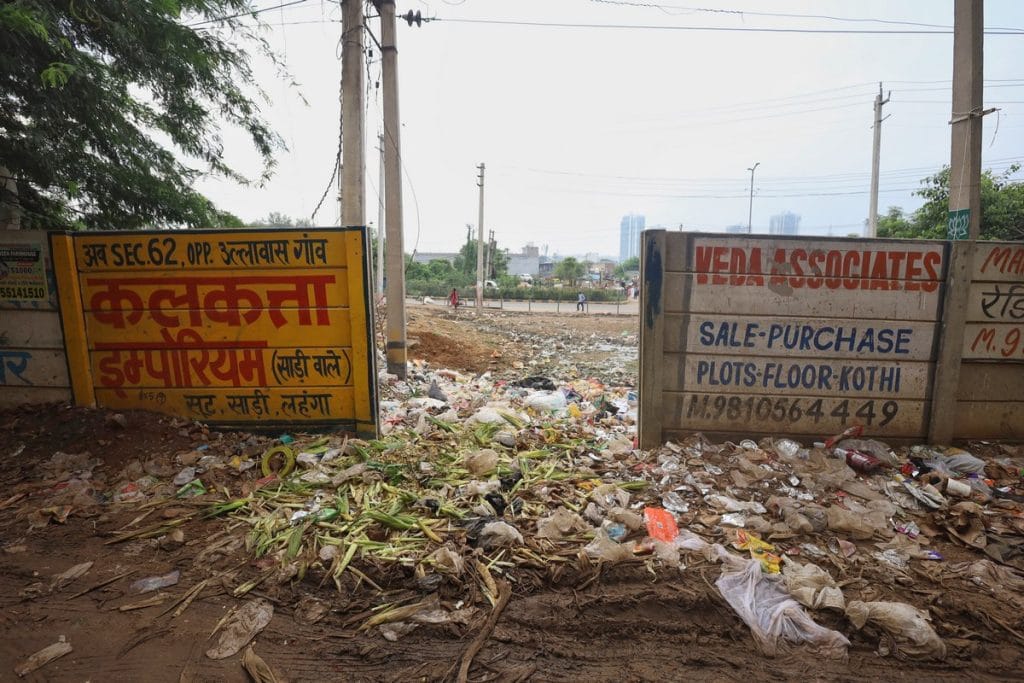
The rich awakening
Waste has taken over chats in Gurugram’s RWA WhatsApp groups, where members are sharing tweets and pushing for waste segregation. Even the rich of Gurugram, living in seven-star condos inside DLF City, have now woken up to the waste crisis.
A senior corporate executive who has lived in Gurugram for over a decade said the problem has become so visible that even those in gated cocoons—like the one he stays in himself—are no longer able to turn a blind eye.
“The rich of Gurugram stay in fancy societies with all the amenities—mown lawns, running tracks, shopping facilities. But when they go out in their fancy cars, they witness the rising heaps of garbage and smell the unbearable stench,” he said. “Gurugram is such an important city not only for Haryana but also in the country. We are living surrounded by filth.”
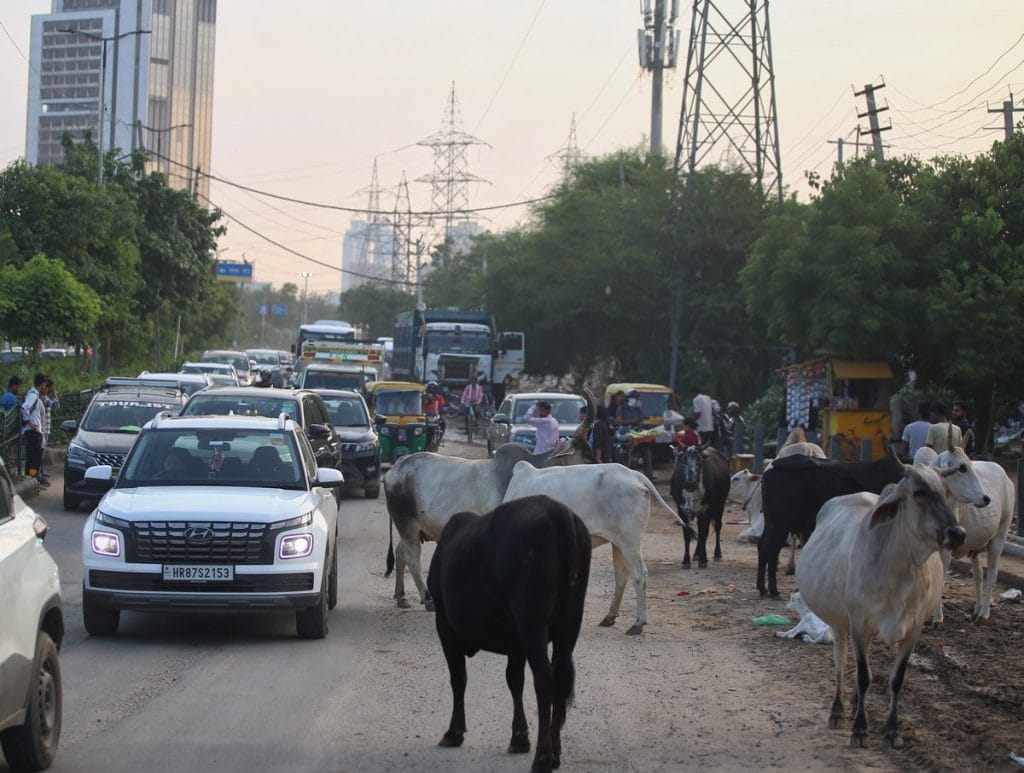
It’s no longer an issue that can be ignored from inside gated bubbles. While residents have long tried to segregate waste, it often gets mixed up again by the time collectors pick it up. As of now, only about 15 per cent of waste is segregated at source. And of the over 5,000 registered sanitation workers, about 1,000 were not assigned as of April.
As reported earlier by ThePrint, Gurugram’s waste business also has a mafia problem. Entrepreneurs trying to enter lucrative zones like DLF and Cyber City are routinely threatened, attacked, or extorted by local gangs.
“If you want to work in the garbage collection business in Gurugram, you have to pay these local goons every month or be ready for your vehicles to be seized, entry to be banned, or worse, to receive death threats,” Arun Singh, whose company is empanelled by the MCG to collect waste from DLF Cyber City, had said.
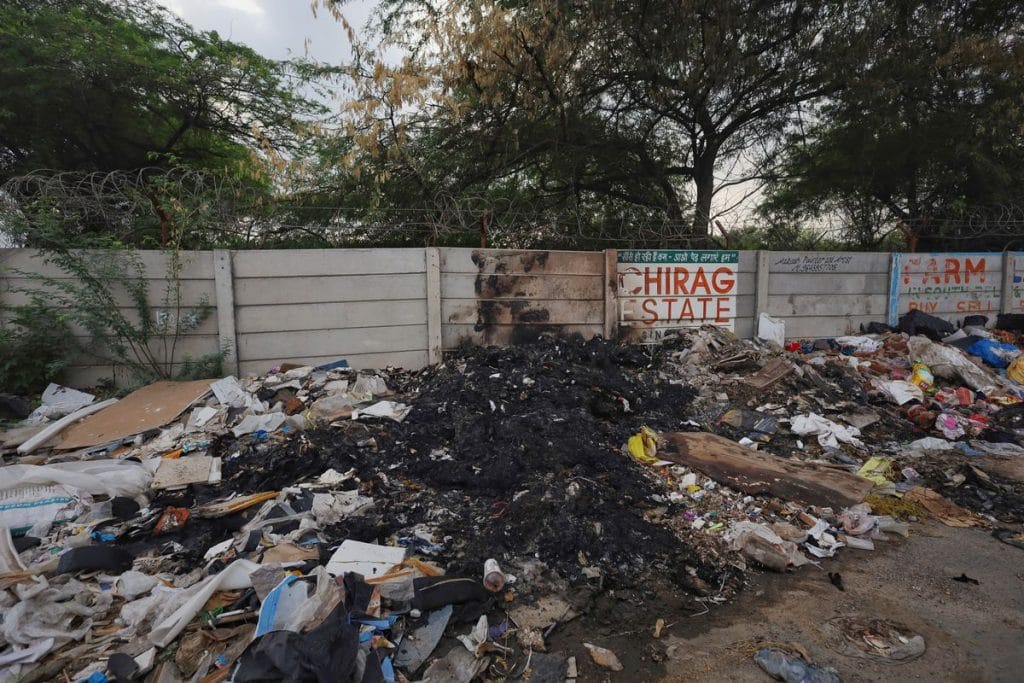
For many, the situation is no longer tenable. Ila Gupta, director of a production company and a resident of a swanky DLF-3 housing society, said inaction is no longer an option. She has been lobbying for better systems and proper waste segregation.
“We have found a collective energy to speak to the administration for an environment that is hygienic and clean— a basic right for any person,” she said. “We have been living in unsanitary conditions amid garbage for years. It is time we unite to use public platforms to voice our concerns.”
Also Read: What makes Gurugram’s Camellias India’s most exclusive pin code? It’s not just about money
Unfulfilled promises
The Gurugram waste crisis has been coming to a head. For many months, RWAs have raised complaints and protested on the issue. Finally, the Haryana government set up the Solid Waste Environment Exigency Programme (SWEEP) committee last year, headed by the chief secretary. And it was promised that by 31 December 2024, Gurugram would be cleaned up and live up to its elite Millennium City tag. But a year since the committee was formed, the same problems persist.
Gurugram produces two main types of waste—solid municipal waste and construction and demolition (C&D) debris. Most of the mounds seen around the city are from construction sites. The Basai plant, meant to handle C&D waste, is 25 km away and can only process 300 tonnes a day. The city, however, generates over 1,000 tonnes daily.
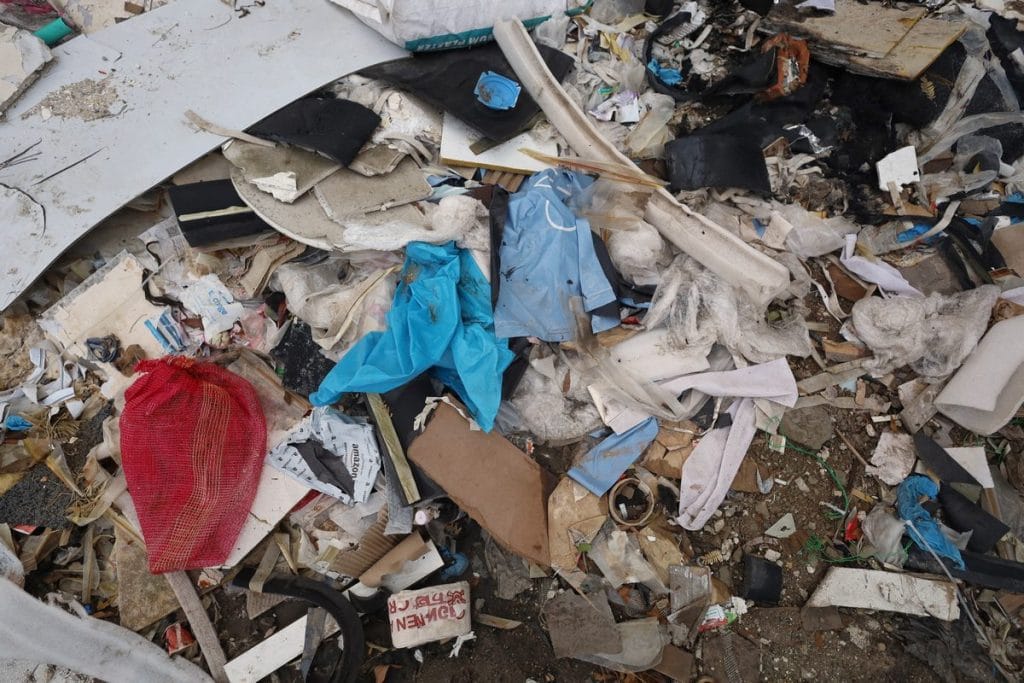
As Gurugram rapidly transformed from a quiet Delhi suburb into a bustling urban hub starting in the 1990s, essential infrastructure was left by the wayside. The city still lacks a dedicated dumping yard. At present, almost all of the city’s solid waste—around 1,200 tonnes a day—ends up at the Bandhwari landfill, which also takes in waste from Faridabad. From the construction sites the waste is picked up and dumped at random locations.
“There is no work at the ground level. Wherever you go, you will find waste, and till now there is no solution,” said Sanjay Lal, president of Federation of Apartment Owners’ Association.

Not only the streets, dumping is rampant in Aravalli forests, village edges, and other open land.
Environmental activist Vaishali Rana, who is fighting a case at the National Green Tribunal to save the Aravalli forest, called the Bandhwari landfill a ticking bomb.

“It’s one of the largest in Asia and [adjacent to] the Aravallis. Leachate from the landfill has contaminated the groundwater of five villages in the surrounding areas. Many water sources used by wildlife are contaminated,” she said.
Last December, the NGT pulled up the MCG on its landfill management, noting that progress has been “very slow” in tackling legacy waste and setting up processing facilities.
“The agencies that picked up the waste– solid or C&D—dumped it anywhere in the city. And subsequently heaps of garbage emerged in different parts of the city,” Lal said.
The Gurugram-Faridabad Marg has construction debris on both sides—stone chips, broken tiles, and bricks lying every few metres, juxtaposed with the green ridges of the Aravallis.
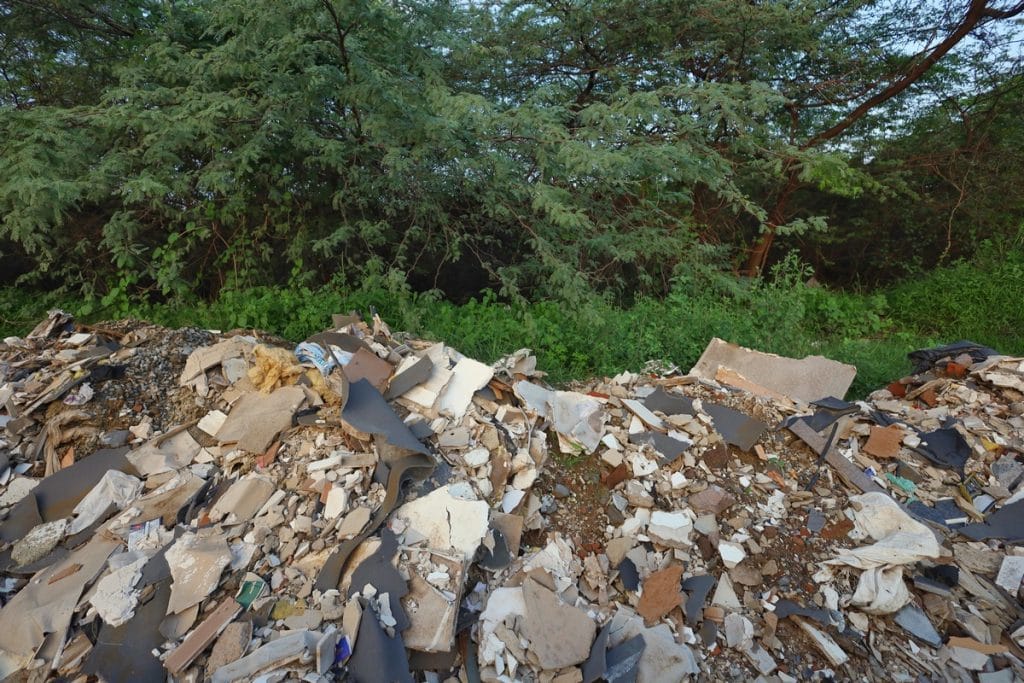
“It used to be a scenic retreat for runners and walkers,” said Rahul Pandita, an author. “Now there’s no walking area at all.”
Last year, the MCG ended its contract with EcoGreen, which had been tasked with managing the city’s waste, and brought in a new company. It also promised to take action against anyone dumping waste in the open.
“There were bureaucratic hurdles in the past few years, work was slowed and not properly managed,” said a senior MCG official.
‘If Indore can, why can’t Gurugram?’
Many citizens of Gurugram now compare their condition with other BJP-run states. They point to Indore in Madhya Pradesh and Surat in Gujarat, which topped the latest Swachh Bharat rankings, and wonder why the double engine isn’t delivering for Gurugram.
“There is no political party to interfere here, and still there is no work on the ground. People are getting frustrated with the administration,” said Sanjay Lal. “They talk about double engine ki sarkar and still nothing on ground, and they cannot take care of something as basic as the waste management problem.”

Residents speak wistfully of the model adopted by Indore, Pune and Surat, and of how ordinary citizens there are also part of the mission.
“They have given people uniforms, employment, and today in Indore every citizen is aware and wants to keep their city clean,” said Anuradha Dhawan. Residents like her now want more lasting solutions than retreating into gated societies or settling for government action plans.
“The Municipal Corporation of Gurugram and NGT all have failed us,” said Rana.
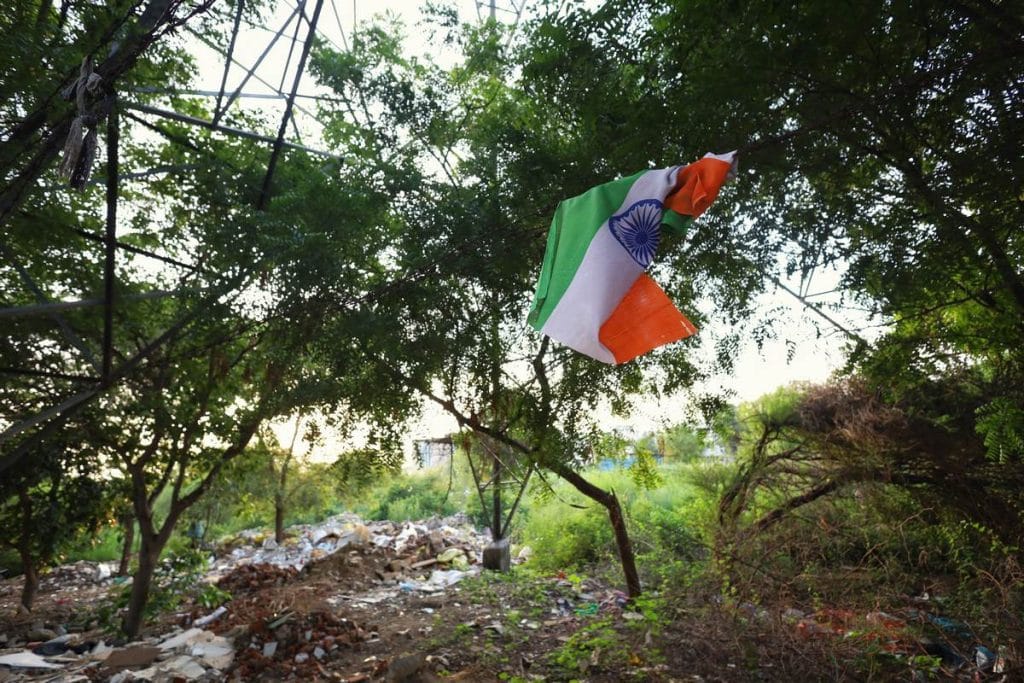
On 7 July, in the thick of the uproar, the MCG announced a month-long overhaul of sanitation efforts under the hashtag #SwachhGurugram.
“Gurugram will become even cleaner!” it said in an X post. “MCG has taken strict steps to improve the cleaning system. The Commissioner, in a late evening meeting with officials, gave clear instructions, QuickResponseTeam (QRT) will be deployed – complaints will be resolved immediately, no complaint will go unnoticed now.”
The comments to this post were less than enthused.
“Gurgaon will be cleaned only on Twitter [X],” one user remarked drily.
(Edited by Asavari Singh)



